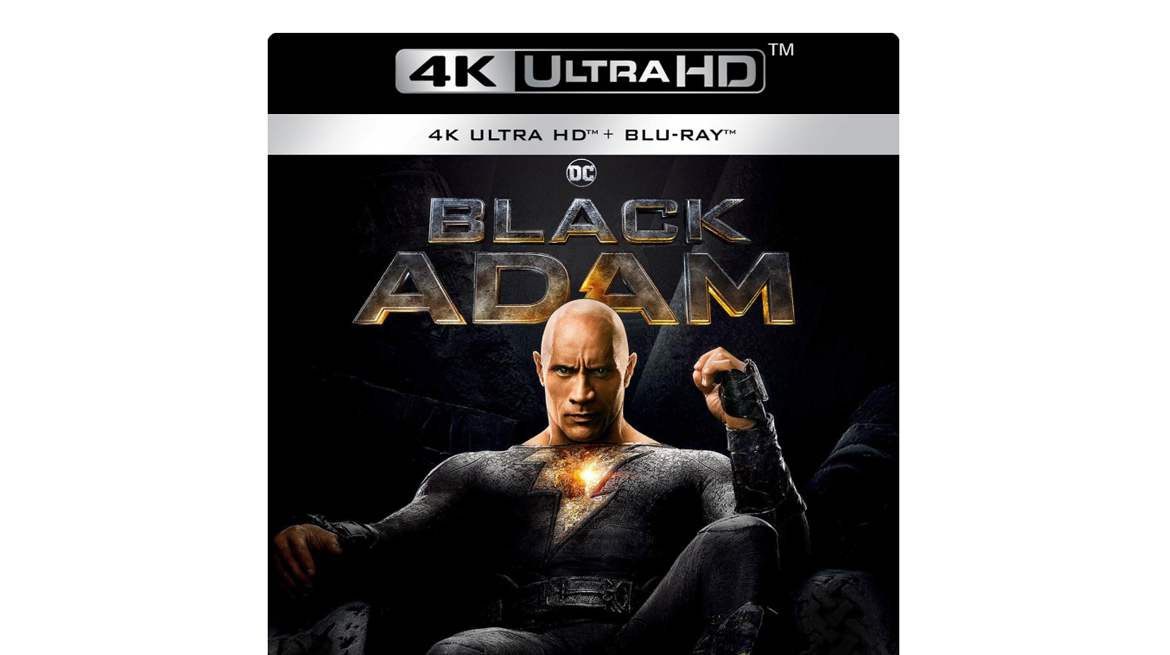TL;DR
Black Adam arrives with Dwayne Johnson's star power, but the film struggles with pacing, logic gaps, and a disjointed narrative. While the Justice Society is introduced, their conflict with Adam feels predictable, and the film's biggest tease is a future that the DCEU has already abandoned. Despite its story issues, the movie offers stunning visuals and excellent audio for a solid home theater experience, showcasing impressive action and effects. Curious about the highs and lows of this anti-hero's debut? Read the full review.
5000 years ago, Black Adam (Dwayne Johnson) was banished to eternal rest in a magical tomb. He is resurrected in modern times by Adrianna Tomaz (Sarah Shahi) and a group of rebels. The people of Kahndaq live under oppression, and Black Adam emerges as a potential savior. However, his methods are unconventional, prompting the Justice Society, led by Hawkman (Aldis Hodge) and Dr. Fate (Pierce Brosnan), to intervene. They find Black Adam a formidable opponent and begin to question their initial assumptions regarding the situation in Kahndaq.
The rivalry between DC and Marvel for cinematic dominance is well-documented. While the MCU has maintained continuity with consistent casting and interconnected storylines, DC has often opted for reboots, particularly within the Batman universe. James Gunn (Guardians of the Galaxy, Suicide Squad, Peacemaker) has now assumed leadership of Warner Bros’ DCEU, promising a more cohesive direction. However, Black Adam appears to be a product of the previous regime. The film’s most impactful scene, a cameo-filled sequence with appropriate musical accompaniment, is undermined by the fact that the DCEU it teases has been effectively discontinued. The impending releases of The Flash, Shazam! Fury of the Gods, and Aquaman: The Lost Kingdom, all connected to this now-orphaned continuity, further complicate matters.
Beyond the challenges DC faces in establishing a coherent cinematic universe and competing with Marvel (whose recent entries have shown signs of weakness, potentially creating an opening for DC), the studio struggles to create compelling films centered around its heroes and anti-heroes.
Prior to this film, Black Adam was not a widely known character. Originally conceived as a Shazam villain, filmmakers initially planned for him to appear in the first Shazam! film but ultimately decided to develop a standalone movie. The resulting script, however, suffers from pacing and structural issues.
Black Adam is presented as a hero from the outset. While his methods involve lethal force, his targets are oppressive enemy soldiers, making it easy to empathize with his cause. Consequently, the arrival of the Justice Society to “save” the population positions them, initially, as antagonists. The film spends an extended period (virtually the entire duration) building to the Justice Society’s realization that Black Adam is not inherently malevolent, a fact readily apparent to the audience from his introduction. This creates a sense of frustration, particularly for those who, like this reviewer, dislike conflicts between heroes, especially when those conflicts result in widespread destruction as seen in Captain America: Civil War.
Another point of contention is the film’s internal logic. Despite the established existence of superheroes within this world, as evidenced by events in Justice League, Aquaman, and Shazam!, characters consistently express surprise at Black Adam’s powers. They fire weapons at him, expressing astonishment at his invulnerability; they are surprised he can fly; and, in one particularly illogical scene, someone strikes him with a baton and is SURPRISED when it breaks.
To avoid excessive criticism, here are a few additional observations. Black Adam, after 5000 years of slumber, awakens and speaks English in Khandaq, a fictional Middle Eastern nation. Similarly, the American members of the Justice Society also speak English. This raises questions of linguistic consistency. The film attempts humor through Black Adam’s unfamiliarity with modern objects, such as doors, which he simply smashes through. Furthermore, a sequence mirrors a Western film, complete with similar structure and music, as Black Adam faces a group of armed villains. This is perplexing, given Black Adam’s invulnerability rendering him impervious to their attacks.
On a more positive note, despite the narrative shortcomings, Black Adam features impressive visuals and action sequences. Experiencing Black Adam on UHD delivers a commendable home theater experience. The 2160p image quality is excellent, exhibiting a near-three-dimensional depth. The film’s numerous dark scenes highlight the superiority of Ultra-HD on physical media compared to streaming. A particular sequence toward the end, depicting Black Adam fighting soldiers without his superpowers, is visually stunning, showcasing exceptional detail in slow-motion, even down to individual raindrops. The Dolby Atmos sound is of reference quality, with a balanced mix between quiet dialogue and impactful action sequences. The opening scene of Black Adam’s emergence is especially impressive, with dynamic explosions and weapon effects.
Warner Bros includes several behind-the-scenes documentaries detailing the film’s production. These are marred, however, by the filmmakers’ repeated emphasis on the film’s role as a franchise starter and their excitement about showcasing Black Adam and the Justice Society in future installments. Their optimism clashes with the studio’s subsequent change in direction.
In conclusion, while Black Adam has its flaws, it also possesses redeeming qualities. Dwayne Johnson’s performance is consistently engaging, and the visual effects are generally well-executed. Viewers willing to suspend their disbelief will find that Black Adam on UHD provides a compelling home theater experience. Therefore, despite its shortcomings, Black Adam is still worth considering.
SF Studios provided review copies for this evaluation. The provision of review materials does not influence our editorial independence. Our reviews are conducted with the interests of our readers and consumers as our foremost priority.

